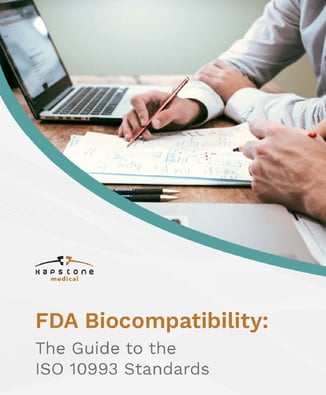Food & Drug Administration (FDA) inspections are part of doing business as a medical device company in the United States. Sometimes, the FDA will issue a notice known as FDA Form 483 after their inspection. The 483 Form must be taken seriously and addressed through appropriate corrective actions, to avoid further action being taken.
So, what is an FDA 483, and what are the best ways to respond?
FDA 483 Explained
Foreign and domestic medical device companies distributing into the US are expected to comply with FDA regulations. When an FDA investigator observes conditions or practices that don’t comply, they’ll issue an FDA Form 483. Generally, this happens when the investigator determines a product is or may become “adulterated or rendered injurious to health.”1
Inspectors are trained to be detailed and comprehensive when performing inspections. If they observe conditions or practices that don’t comply, they’ll present a Form 483 and discuss the letter with management at the close of the inspection.
Some common inspectional observations resulting in a Form 483 include:
- Not following the organizations current procedures
- Not clearly documenting procedures
- Insufficient Corrective and Preventive Action (CAPA) procedures and processes
The Importance of a Timely Response
You will have 15 business days from the date of issuance to respond to an FDA Form 483. Failure to respond may result in a FDA warning letter or further enforcement action— a separate, more serious concern.
Analyzing the Root Causes That Led to Form 483
Before responding to the FDA, identify the root cause of each observation. A root cause analysis is a core part of your FDA 483 response. You may already have root cause analysis procedures in place. If not, now is the time to implement them.
Work backwards from each deficiency in the observation to identify the origin(s). Consider whether the deficiency resulted from routine error or a true defect in your system. If it’s the former, you may need better risk mitigation procedures or more comprehensive training for the involved employees. If it’s the latter, you might need to reassess how your system or processes are set up.
Whatever you find, be sure to keep records and document everything throughout the process. It bears repeating: Document everything!
Corrective and Preventive Action (CAPA)
After identifying where your issues arose, mitigate them and prevent them from happening again. Assign separate Corrective and Preventive Action (CAPA) plans for each FDA 483 observation.
Document the following for each observation, per your own CAPA process.
- Description of the issue (we recommend copying and pasting from the 483 Form)
- Root cause(s)
- Immediate corrections
- Corrective Action plan to prevent the issue from happening again
- Who will “own” the CAPA
- Training that the CAPA assignee may require
Set a realistic timeline. While the FDA expects to see progress in your 15-day response, it is not expected that you’ll correct all issues in that window. Be realistic with yourself and your employees about how long it will take to implement changes and action plans. Include your timelines in your FDA 483 response.
Creating Your Response to the FDA
Once you’ve conducted your analyses and have CAPAs and timelines in place, it’s time to respond to the FDA’s observations in writing. We recommend writing a first draft of your letter initially, so it may be reviewed for errors or additional items that should be included.
Follow a standard, three-part outline for your letter: Cover Letter, Body, and List of Attachments.
Cover Letter
Entrust your cover letter with a senior member of the organization. This sends the message that you’re taking the matter seriously.
Approach this section as an opportunity to thank the FDA for their time and attention. Then, state your renewed commitment to FDA compliance and promise to mitigate anything that was documented in Form 483 (i.e., Management Responsibility).
Body
We suggest that you restate each observation here, and be as detailed with everything as possible. Then, provide the following for each observation:
- Relevant background or contextual information
- Root cause assessment
- Proposed corrective actions with target completion dates
- Preventive actions (especially if the FDA found systemic issues)
- Measurement plan for corrective and preventive action effectiveness — how you will show that your actions were successful
It’s also important to provide the FDA with regular updates on your progress. Advise them of when you plan to contact them with updates in your letter.
List of Attachments
Attach anything that strengthens your case to the FDA, such as background information, standard operating procedures (SOPs), your CAPA measurement plans, and more.
Clearly describe and label each attachment. Ensure that numbering/naming between the body of your response and the attachments match.
Additional Tips for Your Response
Throughout your entire response process, consider the following:
- Know and address what’s expected
- Be clear, thorough, and precise
- Cite supportive facts and data
After you’ve responded and made the necessary changes, prepare for a re-inspection. This might not be scheduled, but it’s a good rule of thumb to anticipate it at any time.
Inform Yourselves about Other Vital FDA Standards
We hope you’ve found these tips informative. It’s important to stay on top of all FDA standards and policies, but we know it can be difficult. We want to help.
A crucial set of standards the FDA follows and requires: ISO 10993. This is a set of international standards for the biological evaluation of medical devices.
Do you need to learn all about them? We have you covered. Click the link below to access our guide, FDA Biocompatibility: The Guide to ISO 10993 Standards.





